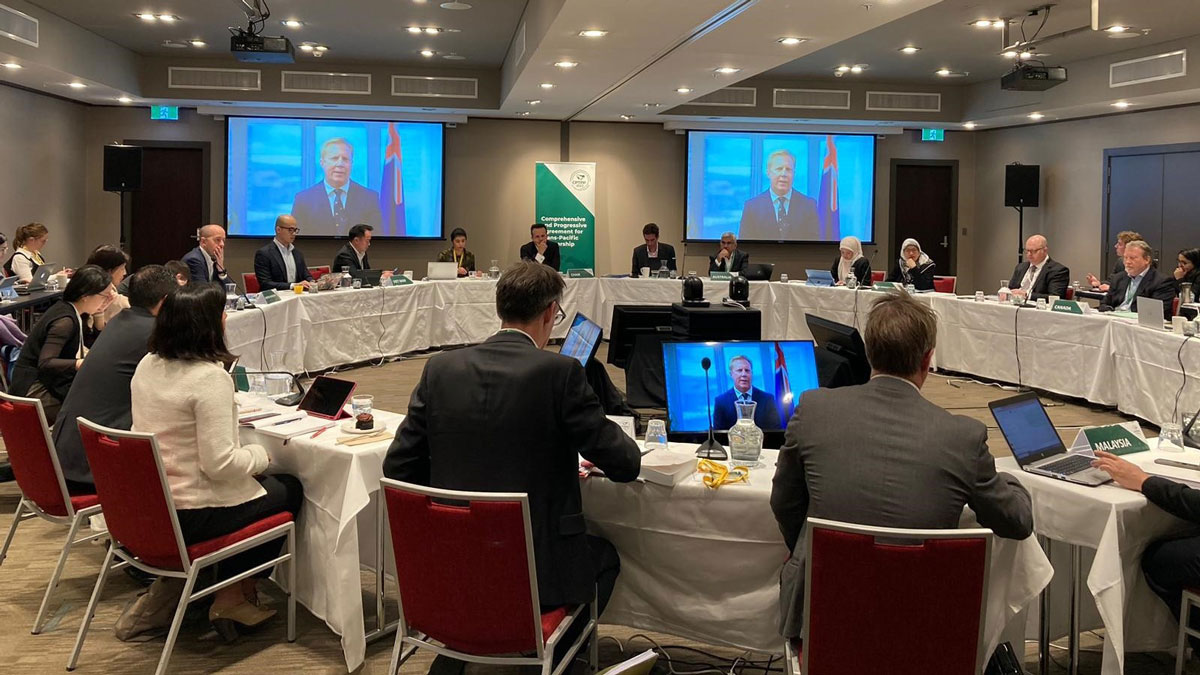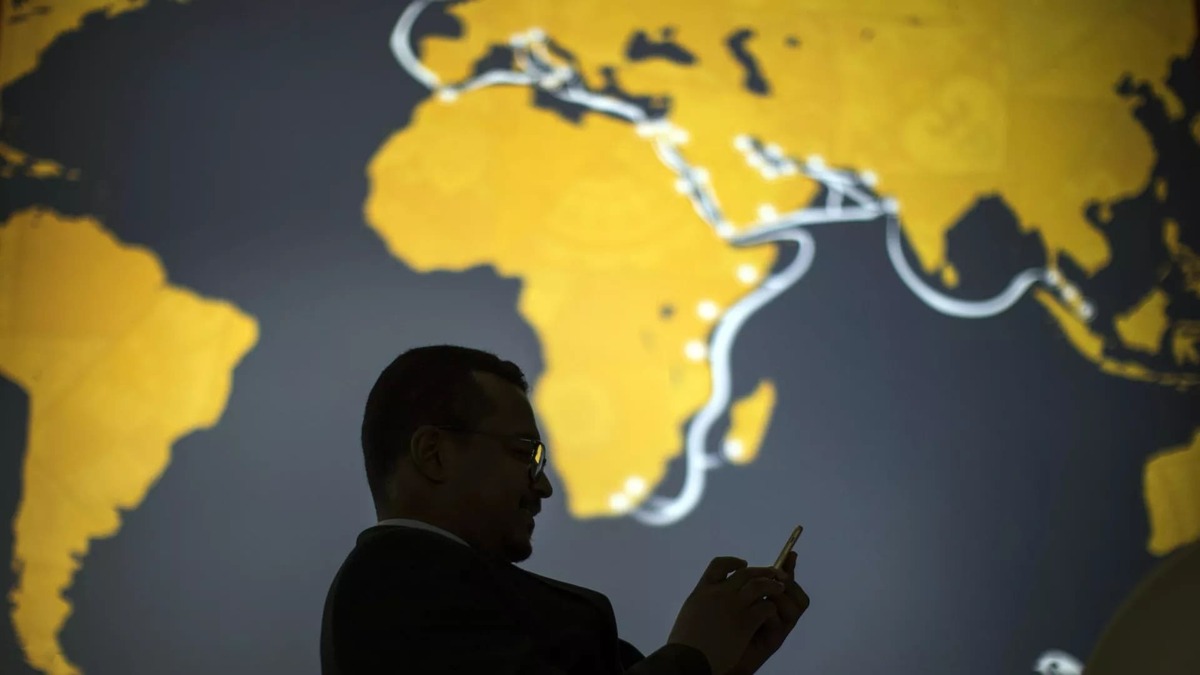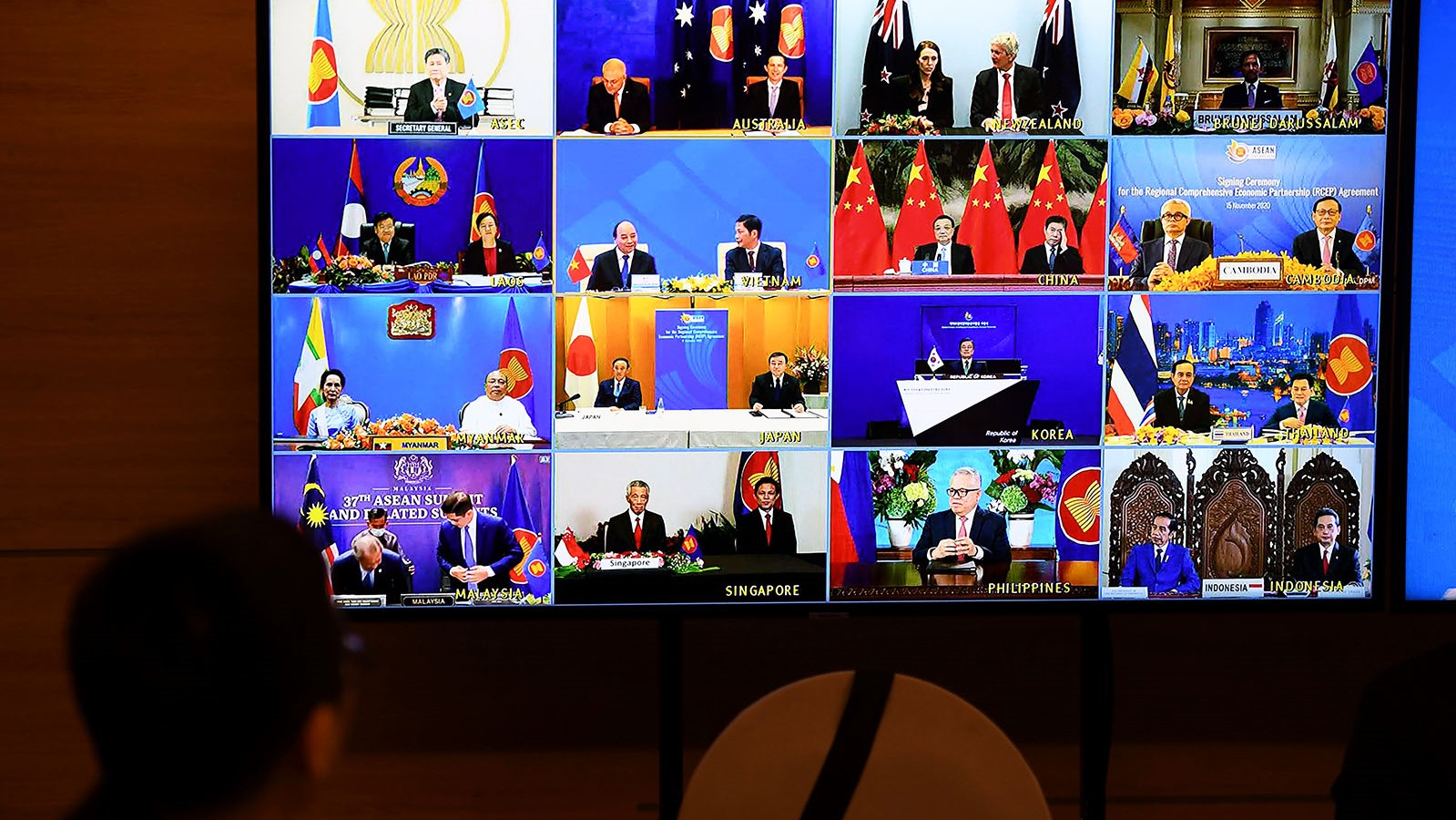Staying relevant is often a challenge for trade deals. The mix of negotiating theater, technical complexity, and a lack of political appetite for painful domestic concessions rarely lead to timely outcomes – or much enthusiasm for revisiting them subsequently. Countries which have not had a hand in designing the rules may feel even more lukewarm about them.
One agreement bucking the trend is the Comprehensive and Progressive Agreement for Trans-Pacific Partnership (CPTPP). Nearly 20 years since the conclusion of its earliest antecedent (the "P4" agreement among New Zealand, Singapore, Chile, and Brunei), the CPTPP has never looked more apropos. The United Kingdom joined midway through 2023, making it the third G7 economy among the 12-strong membership. There is a queue of at least half a dozen other aspirants in the wings, ranging from Costa Rica to China to Ukraine. Perhaps it is time to add "FOMO" to trade glossaries.
The attraction of the CPTPP is in large part due to the location of (most of) its members in the world’s most buoyant economic region, along with its deep and broad set of rules, market access commitments, and binding enforcement mechanisms. These are alluring qualities at a time of a cost-of-living crises, ongoing trade frictions, and a growing sense of the unraveling of international institutions.
Another attractive element is the CPTPP’s fundamental ethos – recently reaffirmed by the agreement’s trade ministers at their meeting last November in San Francisco – that it should be "dynamic and living" and should "remain the ‘gold standard’ for trade agreements" globally.1
The inaugural CPTPP General Review
To that end, members have now embarked on the first-ever CPTPP General Review, intended to ensure that the disciplines contained in the agreement "remain relevant to the trade and investment issues and challenges confronting the Parties."2 Under the leadership of New Zealand as chair of the CPTPP Commission for 2023, ministers agreed on the Terms of Reference for the review last November.3 It will now fall to 2024 chair Canada to take the process forward.
The Terms of Reference respond to the remarkable evolution of the trading environment over the last decade or so. The bulk of the current rules were finalized in 2015, in the CPTPP’s predecessor Trans-Pacific Partnership agreement. Since then, economies have had to grapple with trade slowdowns, a lingering pandemic, wars (of both the military and trade kinds), climate change, accelerating digital transformation, and unprecedented supply chain challenges. These have all prompted new thinking on trade policy settings.
Terms of Reference: Stress-testing core provisions and modernizing others
Ministers have agreed that the Review should focus on ensuring that the agreement continues to support core trade and investment opportunities, global value chains and living standards, including by making sure the rules and institutional arrangements function optimally. At least some CPTPP members will also hope to use the Review to tackle the unfinished business of market access for those handful of sectors that fell short of comprehensive tariff elimination in the first go-around (not quite the "gold standard" promised on the tin).
Topical and emerging issues are also to be considered. Ministers have committed to "demonstrating leadership in emerging digital and green economy issues"; to "upholding labour rights and improving working conditions"; and to "exploring opportunities to promote inclusive outcomes, including for Indigenous Peoples". The Review will also look at ways the agreement can ensure supply chains remain resilient and how the CPTPP can complement the rules-based multilateral trading system, "including as a means for responding to economic coercion".
There is certainly plenty of recent thinking on which CPTPP members can draw for inspiration on these issues. On supply chain resilience, for example, CPTPP members need look no further than the US-led Indo-Pacific Economic Framework for Prosperity (IPEF), concluded last May with the participation of seven CPTPP economies, and encompassing useful modalities like regulatory transparency, shared understandings on global supply chain risks and vulnerabilities, and responsible business conduct. Similarly, CPTPP’s labor chapter could be reviewed with an eye to the IPEF’s "Fair Economy" pillar, aimed at corruption risks and a more transparent business environment.
On inclusion, ideas on Indigenous trade inclusion could be drawn from the "Indigenous Peoples’ Economic and Trade Cooperation Arrangement" (developed by three CPTPP members and one aspirant), and on women, from the Global Trade and Gender Arrangement (five CPTPP members).
(Re)writing the rules for 21st-century trade: the "CPTPP Effect"
But it is in two critical spheres in particular that the CPTPP Review could really come up with a new gold standard: sustainability and digital technologies. In both, there is a wealth of innovative thinking in the region which could be captured in binding new CPTPP rules. In fact, a little like the "Brussels Effect" (to quote the Finnish-American trade expert Anu Bradford’s insightful account of European regulatory globalization), the CPTPP could aspire to a global norm-setting role – let’s call it the "CPTPP Effect™".
This norm-setting could help to shape other current trade negotiations, such as the unfinished IPEF trade pillar, ASEAN’s Digital Economic Framework Agreement (DEFA) negotiations (which include four CPTPP members), and the expansion of the Digital Economy Partnership Agreement, whose membership already includes three CPTPP members and one CPTPP aspirant, and which has received requests for accession from two CPTPP aspirants and an out-of-region economy. Even outside those formal processes, new CPTPP rule-making could influence fellow Indo-Pacific economies and through them, trading partners in other regions, given the CPTPP’s acknowledged role in APEC as a "pathway" to an eventual Free Trade Area of the Asia-Pacific.
Sustainability
On sustainability, the CPTPP already has a distinguished pedigree: Among other things, it included the world’s first legally binding prohibition on harmful fisheries subsidies. But this needs to be updated to reflect the new WTO fish subsidies agreement, along with the outcome of the "Fish 2" negotiations, to be concluded, hopefully, at the upcoming MC13. It also lacks a specific focus on the climate crisis.
Good regional models on these issues include the Singapore-Australia Green Economy Agreement, recent United Kingdom free trade agreements with New Zealand and Australia, the New Zealand-led negotiations (also involving aspirant Costa Rica) for an Agreement on Climate Change, Trade and Sustainability, and the IPEF "Clean Economy" pillar. These exemplars include, variously, liberalization of trade in environmental goods and services; elimination of fossil fuel subsidies; eco-labeling; decarbonization of shipping and the maritime sector; sustainable finance; green skills; green standards; and cooperation on research, clean energy, deforestation, biodiversity, sustainable agriculture and circular economies.
Digital trade
The other critical area where CPTPP members have plenty of good ideas to crib is digital trade. The CPTPP E-commerce chapter was cutting-edge for its time, generating one of the three key global templates for data governance alongside the European and Chinese approaches. Ironically, shortly before the Terms of Reference were finalized, the United States (which was the original author of the CPTPP data governance provisions) announced that it was stepping back from supporting such provisions in the WTO to give itself greater "policy space".
The near-decade since those original rules were designed is a lifetime in the fast-changing digital economy, and the CPTPP now lags well behind the most future-forward approaches. This is a problem, given the centrality of digital technologies to trade and economic growth. Digital trade is far from seamless: barriers are rising, regulation is fragmented, and the digital economy offers not just opportunities but also risks. In this context, well-designed and forward-looking digital trade rules remain a must for governments, businesses, and consumers. An important first step will be to ensure the full implementation of existing commitments: an excellent recent assessment shows that some CPTPP members still have a way to go on this.4
Add to this "unfinished business" the question of where financial services data is processed. The CPTPP prohibition on ‘forced data localization’ currently excludes financial services, meaning that exporters can face costly requirements to store their data in local servers. In addition to being traded in their own right, financial services are the backbone of global value chains and many business activities. While governments have legitimate prudential reasons for keeping a close watch on financial data flows, there are some creative approaches (such as in the Singapore-Australia Digital Economy Agreement) that could satisfy both needs.
Beyond this, CPTPP members could look to integrate the smorgasbord of new issues that have been covered in ‘Digital Economy Agreements’ (DEAs). Key models include the Digital Economy Partnership Agreement between Singapore, New Zealand, Chile, and Korea; Singapore-led bilateral DEAs with Australia, Korea, the United Kingdom, and others in train; the DEFA negotiation mentioned above; and the unfinished IPEF trade pillar, which includes a digital section.
As to the issues that should be considered, the list is long – well outstripping the scope of the current e-commerce chapter. In some areas, especially digital trade facilitation (think paperless trade, e-invoicing, e-contracts, e-payments, and logistics), DEAs have advanced binding principles or rules, often built on practical lessons learned through pilots, sandboxes, and specific use-cases. The CPTPP could use these as a springboard to put in place commercially valuable rules for digitally enabled trade.
In other areas, DEAs are mainly focused on best endeavours and cooperation. There is value in including these areas in the CPTPP too, setting up a program of cooperation rather than trying to write hard law. Important issues include those relating to digital trust such as digital identities, personal information protection and a safe online environment; digital inclusion and regional capacity-building; digital standards; and platform regulation and competition policy. The CPTPP could also help to create guardrails for generative artificial Intelligence and other emerging technologies.
Lastly, the digital economy is critically dependent on flows of talent. Digital labor mobility is a novelty among most DEAs (let alone FTAs), but it has been earmarked for action in the current DEFA negotiations. Again, this is something that the CPTPP could look at – particularly given the benefit of the context of a more comprehensive FTA which already includes business mobility.
Managing the Review and accessions for dynamic gains
This is a long wish list, although with sufficient political will, CPTPP members could make some good headway. However, in parallel to the Review, CPTPP members will also be turning their attention to the slate of new applicants. Managing the resourcing, timeframes, and interplay between the Review and the six current accession requests is unlikely to be straightforward.
However, there are potential synergies for both workstreams. The benefits of updated rules for the existing members are obvious. On the accession side, a modernized, truly "gold standard" agreement would undoubtedly strengthen the CPTPP’s appeal, provided that applicants can meet the agreement’s high standards, of course, in accordance with the 'Auckland Principles'.
Together, these two processes could deliver more resilient growth, greater economic security, and a more enabling environment for the 21st-century economy.
***
[1] CPTPP Joint Ministerial Statement, 15 November 2023, https://www.mfat.govt.nz/assets/CPTPP/CPTPP-Joint-Ministerial-Statement-November-2023.pdf.
[2] CPTPP, Article 27.2.3; also Article 27.2.1(b).
[3] Terms of Reference for Conducting the General Review of the Comprehensive and Progressive Agreement for Trans-Pacific Partnership endorsed at CPTPP Ministerial meeting on 15 November 2023.
[4] Suominen, K. (2022), ‘Monitoring the Implementation of the CPTPP’s E-commerce Chapter’, Center for Strategic International Studies, October 2022 (2023 assessment forthcoming).
© The Hinrich Foundation. See our website Terms and conditions for our copyright and reprint policy. All statements of fact and the views, conclusions and recommendations expressed in this publication are the sole responsibility of the author(s).










